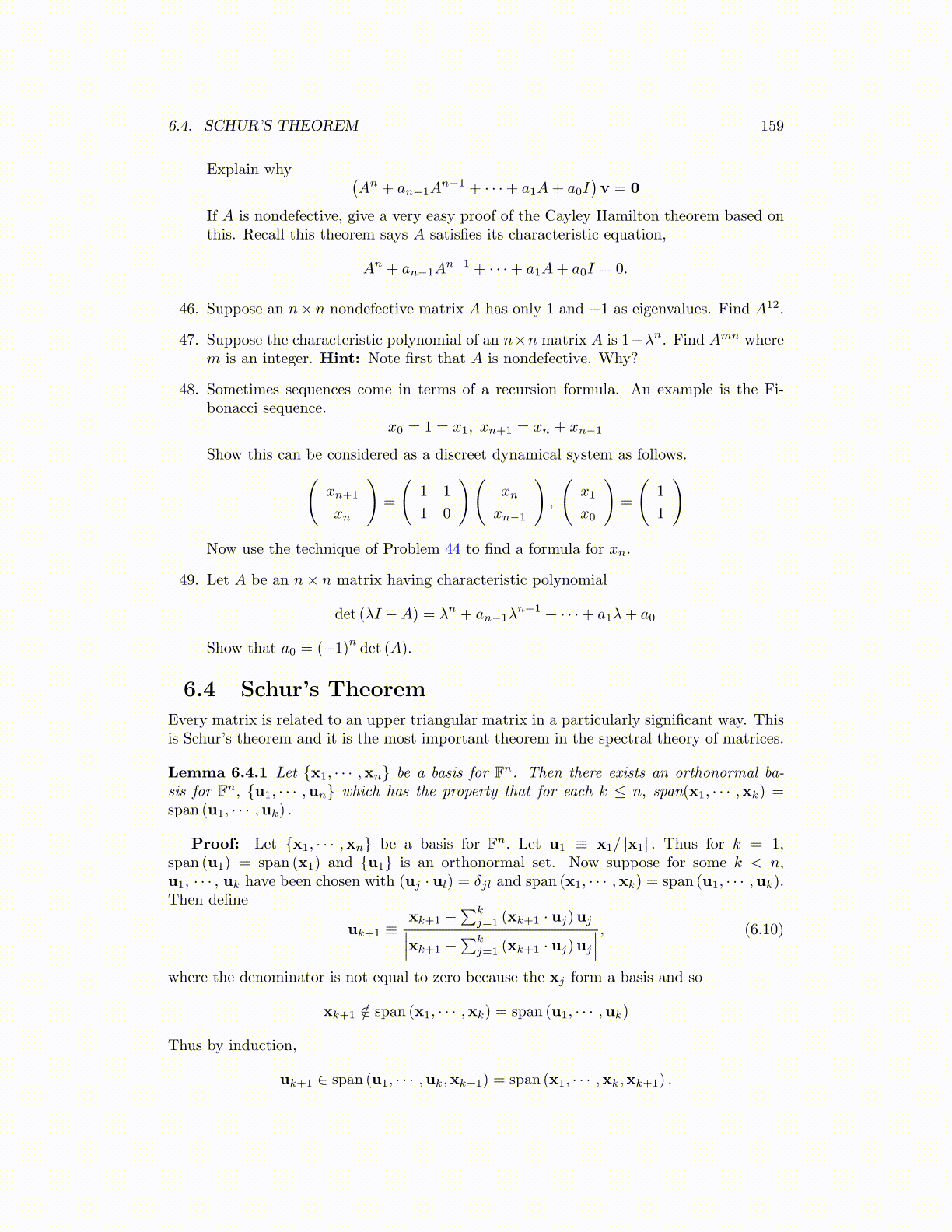
6.4. SCHUR’S THEOREM 159
Explain why (An + an−1A
n−1 + · · ·+ a1A+ a0I)v = 0
If A is nondefective, give a very easy proof of the Cayley Hamilton theorem based onthis. Recall this theorem says A satisfies its characteristic equation,
An + an−1An−1 + · · ·+ a1A+ a0I = 0.
46. Suppose an n× n nondefective matrix A has only 1 and −1 as eigenvalues. Find A12.
47. Suppose the characteristic polynomial of an n×n matrix A is 1−λn. Find Amn wherem is an integer. Hint: Note first that A is nondefective. Why?
48. Sometimes sequences come in terms of a recursion formula. An example is the Fi-bonacci sequence.
x0 = 1 = x1, xn+1 = xn + xn−1
Show this can be considered as a discreet dynamical system as follows.(xn+1
xn
)=
(1 1
1 0
)(xn
xn−1
),
(x1
x0
)=
(1
1
)
Now use the technique of Problem 44 to find a formula for xn.
49. Let A be an n× n matrix having characteristic polynomial
det (λI −A) = λn + an−1λn−1 + · · ·+ a1λ+ a0
Show that a0 = (−1)ndet (A).
6.4 Schur’s Theorem
Every matrix is related to an upper triangular matrix in a particularly significant way. Thisis Schur’s theorem and it is the most important theorem in the spectral theory of matrices.
Lemma 6.4.1 Let {x1, · · · ,xn} be a basis for Fn. Then there exists an orthonormal ba-sis for Fn, {u1, · · · ,un} which has the property that for each k ≤ n, span(x1, · · · ,xk) =span (u1, · · · ,uk) .
Proof: Let {x1, · · · ,xn} be a basis for Fn. Let u1 ≡ x1/ |x1| . Thus for k = 1,span (u1) = span (x1) and {u1} is an orthonormal set. Now suppose for some k < n,u1, · · · , uk have been chosen with (uj · ul) = δjl and span (x1, · · · ,xk) = span (u1, · · · ,uk).Then define
uk+1 ≡xk+1 −
∑kj=1 (xk+1 · uj)uj∣∣∣xk+1 −
∑kj=1 (xk+1 · uj)uj
∣∣∣ , (6.10)
where the denominator is not equal to zero because the xj form a basis and so
xk+1 /∈ span (x1, · · · ,xk) = span (u1, · · · ,uk)
Thus by induction,
uk+1 ∈ span (u1, · · · ,uk,xk+1) = span (x1, · · · ,xk,xk+1) .